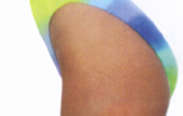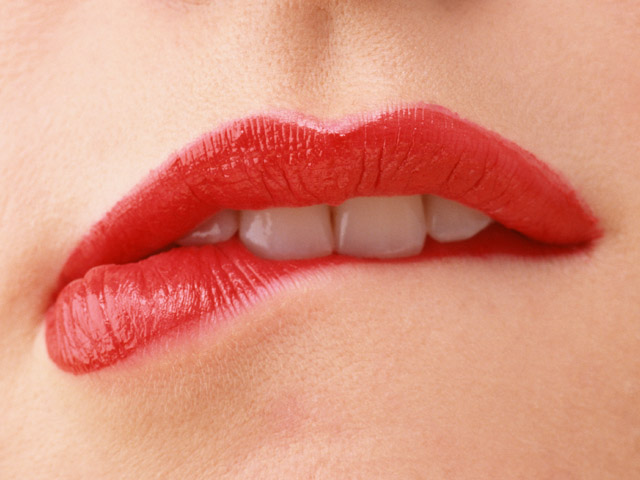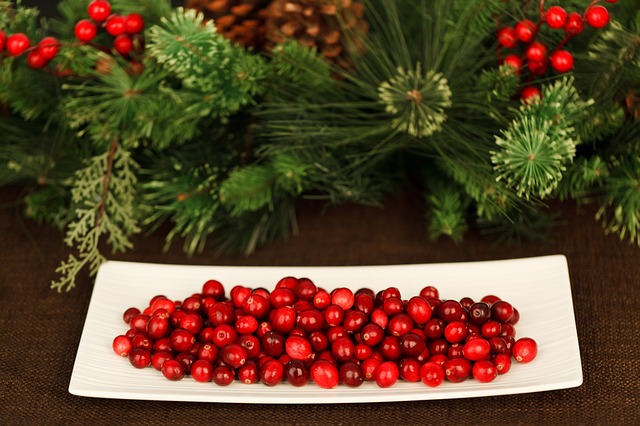What is Vaginitis?
A health article about vaginitis from Your Health Online the A to Z directory of dealing with Health Problems & nutritional Self Care Strategies

Alternative names:- Yeast infection - vagina; Vaginal candidiasis; Monilial vaginitis; candida;
Vaginal yeast infections are caused by a fungus called Candida albicans.
Yeast are tiny organisms that normally live in small numbers on the
skin and inside the vagina.
The acidic environment of the vagina helps keep yeast from growing. If
the vagina becomes less acidic, too many yeast can grow and cause a
vaginal infection.
The acidic balance of the vagina can be changed by your period
(menstruation), pregnancy, diabetes, some antibiotics, birth control
pills and steroids.
Moisture and irritation of the vagina also seem to
encourage yeast to grow.
Vaginitis is the most common gynecologic problem seen in primary care
and gynecology settings.
A vaginal yeast infection, also called vulvovaginal candidiasis, is one of three types of vaginitis.
The other
types are bacterial vaginosis and trichomoniasis.
Yeasts are always present in the vagina in small numbers; however,
symptoms only appear when overgrowth occurs.
As with the other forms of vaginitis, a yeast infection is triggered by changes in the vaginal ecosystem.
It's estimated that 75% of all women will have a vaginal yeast infection at some point in their lives.
A woman’s membranes lining the cervix and vagina normally secrete mucus and moisture, which is slightly milky or clear and clumpy or slippery except when dry and it turns to a yellow color.
A myriad of bacteria grow normally in the vagina of healthy women and some help to keep the vagina healthy.
Lactobacilli bacteria help to maintain the proper pH acid balance to prevent the growth of harmful bacteria.
Sexual arousal, stress or midway between menstrual cycles may cause secretions to increase, but the situation doesn’t usually cause inflammation or irritation of any type in the vulva or vaginal areas.
You can view your discharge by using a clean tissue to gather a sample from inside the vagina and then smear it onto a glass slide or piece of clean glass.
If the substance is clear or milky, you likely aren’t suffering from a vaginal infection.
Signs & Symptoms
Symptoms usually include painful urination, pain during intercourse, itching or irritation in the vaginal area and vaginal discharge.
Treatment for vaginal infections usually attempts to concentrate on the cause rather than the symptoms.
The most common complaint of women with yeast infections is vulval and
vaginal itching. They may also experience irritation and inflammation.
Other symptoms may include:
• dyspareunia (painful intercourse)
• external dysuria as urine passes over the inflamed labia
• burning sensation during urination
• cottage cheese-like discharge.
Women may notice a worsening of symptoms during the week before the
onset of menses, with relief during and after menses, due to the
hormonal changes that occur during the menstrual cycle.
On physical examination, the clinician may note vulvovaginal edema and
erythema.
A thick, White, usually nonmalodorous discharge may be present.
White flecks may be noted adhering to the vaginal wall.
Excoriations may be observed due to scratching or irritation and the
vagina may look and feel dry.
Types of Vaginitis

To diagnose a yeast infection. the clinician must:
• assess the color and consistency of any discharge
• check the pH of vaginal fluid
• assess for the presence of amines by performing a whiff test
• prepare wet mount slides with saline and potassium hydroxide (KOH). Vaginal pH is normal (greater than 4.5) in clients with yeast infection.
A whiff test is performed by mixing the vaginal discharge with one or two drops of 10% to 20% KOH and assessing for odor.
An odor shouldn't be present in patients with yeast infection; this is called a negative whiff test.
A positive whiff test is associated with bacterial
vaginosis. Microscopic evaluation of the saline slide and KOH wet mounts
usually reveal budding yeast cells and pseudohyphae, although they
aren't always seen.
Further testing with fungal cultures is indicated in patients with
recurrent yeast infections or infections refractory to treatment.
There are three common types of vaginal infections – yeast (candida), trichomoniasis (trich) and bacterial vaginosis.
Symptoms of an infection will likely include severe or mild burning and itching around the vulva, abnormally high levels or discolored discharge, thigh chaffing and possibly frequent urges to urinate.
Recurring or chronic vaginal or vulvar infection symptoms may cause skin conditions such as eczema or psoriasis. You may also develop symptoms of a vaginal infection if you’re subjected to stress, other infections in the body, lack of sleep or poor diet which can all lower your resistance to any infections.
Scented vaginal sprays, birth control pills, hormones, diabetes (or pre-diabetic issues), douching and pregnancy may also cause the onset of vaginal infections. Abrasions or cuts and other types of irritations within the vagina (such as having intercourse without enough lubrication) are culprits for causing infections in the vaginal area.
Infections could also be transmitted through having sex with your partner or using an instrument for medical or masturbation reasons. If you suffer from chronic vaginal infections, it may be a sign of a more serious medical condition such as HIV or diabetes. Be sure to see your doctor for proper testing.
One of the most common types of vaginal infections is the yeast fungus (candida albicans). Mostly called candida, this fungus grows in both the vagina and the rectum – especially when the pH balance is acidic (such as within the vagina).
Menstrual cycles, some antibiotics, pregnancy, diabetes and birth control pills tend to make the vagina and rectal areas even more acidic, causing a yeast infection to easily develop.
Also, when your system is out of balance from hormonal or other issues, yeast organisms can grow easily and plentifully. It produces a cottage-cheese like discharge and unpleasant odor and possibly cause itching or burning.
Recurring yeast infections may also happen because of the candida fungus on a male partner. The only sure way to diagnose a yeast infection is to be examined by a physician. He or she will analyze the vaginal secretions with a microscope and may also order a lab culture.
Bacterial vaginosis is another type of vaginal infection. It’s caused by an imbalance within the vagina when an abnormal growth of microorganisms such as anaerobic bacteria, gardnerella and mycoplasmas occurs.
Some women don’t realize they have bacterial vaginosis as the symptoms seem to appear and disappear – usually appearing during a menstrual cycle and becoming worst as it progresses – and disappearing after the period.
Causes of bacterial vaginosis might include routine douching and infections such as those which are sexually transmitted. The symptoms are a discharge which appears grayish or thick and white and has a strong odor.
Vulvitis is an inflammation of the vulva and could be cause by a certain type of medical condition or from using external creams or other irritants. You may have vulvitis caused by oral sex, an injury, sitting in a hot tub, allergic reaction to soaps, powders or other products.
Sanitary napkin irritation, underwear made from synthetic fibers or panty hose may also contribute to the vulvitis infection, which may also come with a vaginal infection. Other causes ay include stress, poor hygiene or a diet lacking in proper vitamins and minerals.
Hormonal drops such as happens during post-menopausal years may cause vulvitis because of drying and less elastic vulvar tissues. Women with diabetes may also suffer from the condition.
You may notice symptoms of redness, swelling, pain, itching and burning during an outbreak of vulvitis. Sometimes, blisters appear which may open, drain and form a crust. You may develop a secondary infection if you scratch the irritated area.
Vulvodynia is the term used to describe chronic pain in the vulva. Symptoms are pain, itching and stinging, severe burning and irritation in the genital area. You could develop vulvodynia as a result or during of a severe yeast infection or outbreak of herpes.
One type of vulvodynia is called generalized and may occur within different parts of the vulva. You may experience it at various times and even when you’re not having sexual intercourse or masturbating.
The other type of vulvodynia is called localized vulvodynia and symptoms include pain in the area of the vagina opening (vestibule) when that area is pressed on or even lightly touched.
What Causes vaginitis?

The most common cause (about 90%) of a vaginal yeast infection is
a fungus called Candida albicans. Other fungi that may also be
responsible include;
• C. glabrata
• C. parapsilosis
• C. tropicalis
• Saccharomyces cerevisiae.
It's unknown exactly why some women are more prone to yeast infections.
Even so, some predisposing factors have been identified. including:
• antibiotic use
• hormonal contraceptives (oral and topical)
• corticosteroid therapy
• douching
• human immunodeficiency virus infection or other immunosuppressed states
• hormones
• increased frequency of sexual intercourse
• multiple sex partners
• oral or anal sexual intercourse
• obesity
• pregnancy
• sexually transmitted diseases
• stress
• tissue abrasion that allows yeast to infiltrate the vaginal epithelium
• uncontrolled diabetes mellitus
• vaginal medications.
Prevention of Vaginitis:

You may be successful at preventing recurring vaginal infection by taking some prevention measure such as supplementing your diet with vitamins B and C.
Avoid douching and use condoms, which will reduce the effect of alkaline-containing semen.
Eating yogurt may help by balancing your pH, but isn’t effective if you have bacterial vaginosis.
Also avoid using tampons if you’re prone to vaginal infections.
Keep in mind that these types of alternative treatments may provide immediate and temporary relief from symptoms, but will not cure vaginal infections.
You can actually over clean the vulva enough to irritate it and invite infections to the area.
Simply washing once per day with warm water is enough to keep it clean and help to prevent harmful bacteria from forming.
Some success has been found by drinking about eight ounces of unsweetened cranberry juice per day or using cranberry supplements.
Garlic suppositories (peeled clove of garlic wrapped in gauze) and live cultured yogurt inserted into the vagina may also help keep infections at bay.
Candida infections may respond nicely to potassium sorbate which is a preservative when home-brewing beer.
Mix a solution of dry potassium sorbate and about a pint of water.
You may insert the soaked tampon into the vagina for a few hours (preferably at night and remove it in the morning).
Get as much rest as you can to keep your immune system ready to fight infections and if you have a male partner, get him to use the antifungal cream to his penis twice per day for a couple of weeks.
Uncircumcised men tend to carry the infection beneath the over-skin, so he needs to make sure he cleans properly.
A simple thing, but one you may need a reminder about is to always wipe from front to back and keep the vulva clean, dry and cool.
Avoid using toilet paper that’s scented or uses dyes as they may irritate the vulva.
Hot boric acid compresses and sitz baths which include comfrey may soothe the area – and be sure to wear cotton underwear and use cotton or pure linen towels in the bathroom.
Cold compresses with live-cultured cottage cheese might help to prevent itching and soothe the area.
Using a non-irritating lubricant like K-Y jelly or Astroglide during sex may keep the genital area from becoming irritated and if itching occurs, use calamine lotion.
Don’t use any commercial substance in the genital area which may cause irritation or itching.
Take precautions to prevent occurrences of vaginal infections – and if you can’t find a prevention method on your own, make sure you seek help from your healthcare provider.
When to seek Medical Advice:
Besides being extremely irritating and painful, vaginal infections are downright embarrassing to discuss with others – even your family doctor.
The good news is that vaginal infections can usually be resolved in a short amount of time and are easily treatable.
Ages that are usually affected by vaginal infections are persons between the ages of 14 and 60.
It’s rare than newborns, toddlers or persons between 6 and 13 are affected, but somewhat common in those people up to 60 years of age.
Over three million cases of various vaginal infections are diagnosed in the U.S. each year.
They’re usually caused by an imbalance of vaginal bacteria, low estrogen levels (especially after menopause) or an infection.
Oral treatment is commonly preferred because it isn't as messy as topical treatments and patients are more likely to comply.
However, the
adverse effect of hepatotoxicity must be kept in mind. One oral dose of
fluconazole (Diflucan) can be given.
For those with vulvar itching and burning, a topical anti fungal may be prescribed to relieve the discomfort when applied externally.
Several over-the-counter treatments are available and can be recommended
for clients with previously diagnosed yeast infections who have
recurrence of the same symptoms.

Treatment/Therapy:
Yeast infections can be treated topically or orally. Topical
treatments are generally more effective and may be given as creams,
suppositories, or a combination of both.
Doses are given each night for 3 to 7 days, depending on the agent and concentration. Recurrent or refractory infections warrant longer therapy.
Topical medications include:
• clotrimazole (Mycelex)
• miconazole (Monistat)
• butoconazole (Femstat)
• terconazole (Terazol).
Yeast infections are usually easy to diagnose and treat. You could try an over-the-counter treatment such as a vaginal suppository or cream or oral antifungal meds.
But, beware that some antifungal creams might get rid of the symptoms without getting rid of the infection.
If you have recurring yeast infections, you may need oral treatments.
Suppositories and creams can be used during pregnancy as they have fewer harmful side effects than oral treatments.
Sometimes a baby can be born with a candida infection (thrush) if the mother has an infection when it’s born.
A doctor will usually treat the baby with oral nystatin drops.
Boric acid capsules may also be recommended or using gentian violet to swab on the cervix, vulva and vagina.
Beware that an allergic reaction to gentian violet may occur.
Boric acid side effects don’t usually occur, but may cause itching and burning in and around the vagina.
Don’t use boric acid if you have cuts, sores or abrasions in the genital area as it can enter the bloodstream and cause problems such as diarrhea and vomiting and even kidney damage.
Bacterial vaginosis is usually treated by using metronidazole or clindamycin either vaginally or orally for a few days to a week.
Metronidazole is usually the first choice because it’s less apt to cause a yeast infection than clindamycin.
Vaginal treatments for bacterial vaginosis are usually less reactive, but can be more expensive than taking the pills.
It’s common for women to experience another bacterial vaginosis infection within a few months of treatment.
Using a condom during sexual relations may help to prevent recurring infections.
Sometimes women develop bacterial vaginosis infections after a gynecological surgery such as a vaginal hysterectomy.
There’s no normal medical treatment plan for vulvodynia because the reasons for the infection aren’t clear.
Your doctor will first try to treat the cause of the pain, which includes skin problems around the vulva, an infection such as herpes, a blocked Bartholin duct or cystitis that causes urinary and bladder pain.
Irritants or activities around the vulva may be the cause of the pain as will Candida or inflammatory vaginitis.
Spasms originating in the pelvic floor area of the body could also be the cause of your pain.
The doctor will most likely recommend one of several options including a low-dosage of tricyclic antidepressant that will help to lessen central nervous system pain, applying estrogen cream in the vagina, topical anesthetic ointment and physical therapy.
Your healthcare provider may also recommend seeing a sex therapist or counselor if he suspects the pain could come from past sexual experiences.
Many times, multiple or a combination of treatments is required.
If none of the usual treatments work to alleviate the pain and irritation from vaginal infections, surgery may be suggested.
A vestibulectomy involves the removal of the hymen and vestibule, but success doesn’t always follow the surgery.
You may want to try a natural or alternative remedy to treat your vaginal infections or prevent them from occurring.
Rather than taking antibiotics, some herbal remedies help to restore natural vaginal flora and help the healing process.
Sitz baths - where you sit in the amount of water necessary to cover your hips, thighs and buttocks - may help to relieve vaginal infection symptoms.
Avoid using any of these remedies if you suspect you have an infection involving the fallopian tubes, ovaries or uterus.
Self Care strategies for Living with Vaginitis
Care of the patient with a yeast infection includes teaching about treatment and prevention.
Self-diagnosis, treatment, and prevention must
also be addressed.
• For the patient who is self-treating, if symptoms persist or if they recur within 2 months, medical care should be sought.
• Intercourse should be avoided until treatment is complete.
• Partner treatment isn't necessary unless symptoms appear, then topical treatment can be given.
• Patients who are pregnant should be treated for 7 days with a topical medication.
• Avoid brewer's yeast or foods rich in yeast.
Patients should be taught about vaginal hygiene, including the following:
• Avoid tight-fitting clothes.
• Wear cotton underwear.
• Dry the vaginal area well after bathing.
• Wipe from front to back after using the toilet.
• Change out of wet swimsuits or damp clothes promptly.
• Avoid deodorant sanitary pads, tampons, and toilet paper.
• Discourage douching or using feminine hygiene sprays.
• Decrease intake of sugar and yeast-containing foods and beverages.
Natural Home remedies to cure vaginal yeast infection
• Peel a fresh clove of garlic and make a little tampon by wrapping it
in cheesecloth and tying with unwaxed dental floss. You may leave a bit
of floss to pull it out afterward. Insert it in vagina and leave there
for several hours, say overnight, and remove it in the morning. For
severe infection, try this in the morning and during night both. Repeat
this until one day after the symptoms disappear.
• Drink at least two glasses of buttermilk a-day, whether infected or
not. In fact making curds a part of the daily diet in take reduces the
probability of vaginal yeast infection.
• Regularly daubing apple cider vinegar in the areas prone to this
infection. Your can add some garlic to stop the itchy feeling; and water
to dilute the vinegar concentration
• Dissolve 1 Tb sp of potassium sorbate in 1 cup water. Insert a tampon
into the vagina and pour this solution inside to be absorbed by the
tampon. Keep it there overnight. Repeat this for several nights. Helps
to cure vaginal yeast infection.
• Pour a few drops of Tea tree oil (available from natural health
stores) on a lubricated tampon & insert into the vagina. Helps to
prevent vaginal yeast infection.
Diet change strategies:

Human immunodeficiency virus infection or other immunosuppressed states can be dealt with by improving your nutrition and ensuring that your body is capable of absorbing this nutrition
Adding Cranberries and Yoghurt to your diet may be helpful.
You may want to read this article about: why is nutrition such an issue nowadays?
Vitamin & Nutrient Associations
Further reading through our articles on health issues will give you a body of information that will help you decide what options you have to deal with the underlying causes of your vaginitis problem through giving your body the nutrition products that will assist you body to heal from the inside out.
We wish you well in your search for solutions to this problem and your movement towards better health in all areas.
Below here are examples of Health Success Results other people have had with using a self care strategy for dealing with vaginitis:
We would be very interested to hear your result stories with your problem if you are using some of our nutrition products. To send us your story just fill out the form below.
Share *YOUR* remedy & health success story!We are on a world-wide mission to source and tell our readers about as many as possible of the natural remedies & self care strategies available, so please help us to grow and improve our health information on this subject. See below here what stories & resources have been contributed on this subject:Click below to see contributions from other visitors to this page...
Dietary Changes To Help You Avoid Yeast Infections
Managing Your New Life Free From Bacterial Vaginosis
Conquering Bacterial Vaginosis By Coping With Stress
Foods That Build a Strong Immunity to BV
You Are What You Eat – How Food Cultivates Bacterial Vaginosis
Yes There Are Simple Cures for Bacterial Vaginosis
A Quick Remedy for Bacterial Vaginosis
How to Cure Bacterial Vaginosis at Home
What A Yeast Infection Looks Like
Yeast Infection: Men Can Be Affected Just Like Women
Female Yeast Infection: Why Does It Affect More Women?
Home Remedy for Yeast Infection: Things You Can Do To Ease the Symptoms
How to Cure Yeast Infection With Yoghurt
How to Treat A Yeast Infection: Methods Your Doctor May Recommend
The Symptoms of Yeast Infection and When to Seek A Diagnosis
What Causes Yeast Infections?
Easy Natural Home Remedies For Vaginitis
Treatment For Bacterial Vaginitis
|
Subscribe to “Your Health Success” free newsletter
BACK TO “Your Health Online”
the A to Z directory of dealing with Health Problems & Self Care Strategies for natural remedies to your health issues.
*** GENERAL RELEASE AND ASSIGNMENT
For good and valuable consideration, the receipt and legal sufficiency of which is hereby acknowledged, I ("I", "me", "my") hereby agree as follows:
1) I hereby grant to Warren Tattersall, his successors, assignees and licensees the unlimited right, but not the
obligation, to use any statements made by or attributed to me (my "Statements") as well as my name, voice, and likeness, performance, personal characteristics and other identifying information (jointly and severally with the Statements and the photographs referenced in Paragraph 2 below, my "Personal Characteristics") in and in connection with the advertising, promotion, marketing and other exploitation of Herbalife products or Warren Tattersall’s services in any and all languages and media, now known or hereafter devised, throughout the universe in perpetuity.
2) If I supply Warren Tattersall with photographs of myself on this date or any date subsequent, I agree that Warren Tattersall may use such photographs to the full extent provided above, I warrant and represent that I am the person depicted in the photograph, I am the owner of the photograph, I have the authority to grant the permission and rights granted herein, and no one else’s permission is required to grant such rights, and I understand that the copy of the photograph(s) I supply to Warren Tattersall will not be returned.
3) I understand that Warren Tattersall is not obligated to use my Personal Characteristics as permitted herein or, if commenced, to continue with such use in any territory. I acknowledge and agree that Warren Tattersall may make my Personal Characteristics available to Warren Tattersall’s independent distributors to use as permitted above.
4) In undertaking the act of submitting my words and images through www.TheHealthSuccessSite.com I understand that I am agreeing the terms and conditions of this agreement
I have read this entire General Release and Assignment and fully understand his contents. I likewise understand that this document shall remain in full force and effect unless/until I request that it be terminated, and that any such request must be made in a signed writing. By signing below, I hereby acknowledge and agree to the
foregoing.
I understand that in submitting my material for publication I am granting the rights to reproduce this material on the internet or in other form and I have read the conditions above
============================================================
SITE DISCLAIMER: Do these products “cure” anything? Of course not… but it stands to reason that if you cleanse your body and feed it the finest nutrition available, giving it everything it needs in balance, on a daily basis, that your body will do what nature intended, and give you the best possible chance to fend off sickness and disease. This vaginitis information is not presented by a medical practitioner and is for educational and informational purposes only. The content is not intended to be a substitute for professional medical advice, diagnosis, or treatment. Always seek the advice of your physician or other qualified health provider with any vaginitis questions you may have regarding a medical condition. Never disregard professional medical advice or delay in seeking it because of something you have read.
The vaginitis resources on this site are not intended to be a substitute for professional advice. While all attempts have been made to verify information provided in this publication, neither the author nor the publisher assumes any responsibility for errors, omissions or contrary interpretation of the web site vaginitis subject matter herein. The site vaginitis contents are solely the opinion of the authors and should not be considered as a form of advice, direction and/or recommendation of any kind. If expert advice or counseling is needed, services of a competent professional should be sought. The author and the Publisher assume no responsibility or liability and specifically disclaim any warranty, express or implied for any products or services mentioned, or any techniques or vaginitis practices described.
The purchaser or reader of this publication assumes responsibility for the use of these vaginitis materials and information. Neither the author nor the Publisher assumes any responsibility or liability whatsoever on the behalf of any purchaser or reader of these vaginitis materials. There is no guarantee of validity of accuracy. Any perceived slight of specific people or organizations is unintentional. This website and its creators are not responsible for the content of any sites linked to. Since natural and/or dietary supplements are not FDA approved they must be accompanied by a two-part disclaimer on the product label: that the statement has not been evaluated by FDA and that the product is not intended to "diagnose, treat, cure or prevent any disease."
===========================================================
Back to Top of your health online vaginitis page
Subscribe to “Your Health Success” newsletter
Terms of Use
|
Privacy Policy
|
Disclaimer
|
